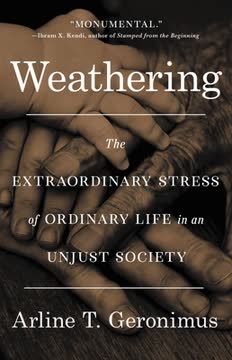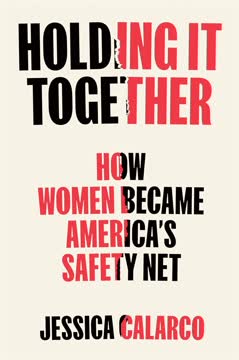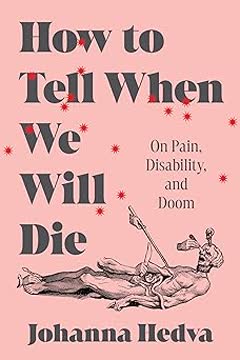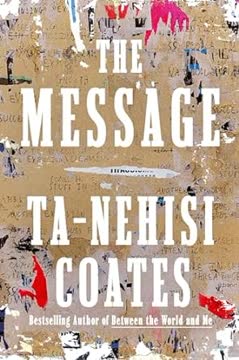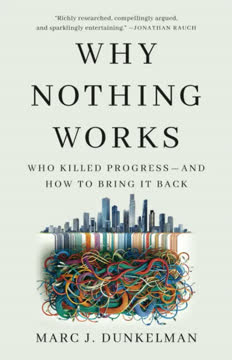Key Takeaways
1. Weathering: The Body's Response to Systemic Oppression
Weathering is about hopeful, hardworking, responsible, skilled, and resilient people dying from the physical toll of constant stress on their bodies, paying with their health because they live in a rigged, degrading, and exploitative system.
A profound process. Weathering describes the physiological toll that living in marginalized communities, subjected to racial, ethnic, religious, and class discrimination, takes on human bodies. This process affects individuals down to the cellular level, accelerating aging and increasing vulnerability to chronic diseases and early death, regardless of individual efforts or adherence to health advice. It's a stark counter-narrative to the "American track record of ever improving health" touted by institutions like the HHS.
Beyond individual blame. The concept of weathering challenges the dominant "personal responsibility" narrative that attributes poor health outcomes to individual choices like diet, exercise, or lifestyle. Instead, it highlights how systemic racism and classism create a constant state of stress, forcing individuals to pay with their health for merely existing and striving within an exploitative system. This constant struggle is not a choice, but a consequence of societal structures.
A biological reality. Weathering is not merely a metaphor; it's a measurable biological process. It encompasses the dynamic physiological and psychosocial dimensions of living under oppression, often activated by psychosocial stressors. This biopsychosocial toll manifests as premature aging and increased susceptibility to chronic diseases, making health inequities an inevitable byproduct of a society that denies the biological fiction of race and the reality of systemic injustice.
2. Beyond Genes and Choices: Debunking Health Disparity Myths
Race is a biological fiction, an invention that keeps some people, those deemed by those in power to fall on the “wrong” side of an arbitrary color line (or a religious, class, ethnic, gender, sexual-orientation, or gender-identity line), in their place.
Challenging conventional wisdom. For decades, explanations for racial health disparities have focused on genetics, cultural influences, socioeconomic status, or individual health behaviors. However, these theories are often unscientific, even racist, and fail to account for persistent and growing inequities. The idea that Black Americans simply "choose" unhealthy lifestyles or have inherent genetic predispositions is a convenient, yet false, narrative.
The "age-washing" fallacy. Society often "age-washes" health disparities, assuming a universally uniform aging process where good health is a reward for disciplined choices. This perspective ignores the reality that marginalized groups face unconscionably high levels of early death and disability, primarily from chronic diseases, not just violence or drug use. It leads to the harmful conclusion that if you're aging badly, you have only yourself to blame.
Epigenetics, not destiny. While our genetic code (genotype) is fixed, its expression (phenotype) is fluid and heavily influenced by environmental factors. Epigenetics shows how chronic stress, environmental toxins, and social conditions can "turn on" or "turn off" genes, leading to disease. Examples like the Pima Indians demonstrate that environmental shifts, not genetics, drive dramatic health changes, debunking the myth of race-linked disease genes.
3. Racialized Stress: How Social Identity Accelerates Biological Aging
When this overexposure is sustained over a prolonged period, it causes the wear and tear on the body that is known, technically, as allostatic load, affecting all the major systems of the body: neuroendocrine, cardiovascular, metabolic, and immune.
Chronic stress, not acute. Unlike acute stress (e.g., encountering a cheetah), which triggers a temporary fight-or-flight response, chronic physiological stress from living in a racialized society never recedes. This sustained activation of stress hormones like cortisol and adrenaline leads to "allostatic load"—measurable wear and tear on the body's systems. This is not about "stressing less" but about enduring relentless, unavoidable pressures.
Biological cascade of harm. The constant flood of stress hormones in the bloodstream, independent of diet, leads to:
- Increased blood pressure, damaging arteries and veins.
- Buildup of atherosclerotic plaque, causing hardening of arteries.
- Enlarged heart and irregular heartbeats.
- Elevated cortisol, leading to insulin resistance and diabetes.
- Brain changes: shrinking hippocampus (memory), enlarged amygdala (emotions), increasing susceptibility to anxiety and depression.
Cellular-level aging. Chronic stress accelerates cellular aging by shortening telomeres—protective caps on chromosomes. As telomeres shorten, cells become senescent ("zombie cells"), cease dividing, and emit toxic signals, causing chronic, systemic inflammation ("inflamm-aging"). This process underlies the early onset of diseases like cardiovascular disease, cancer, and autoimmune disorders in weathered populations, making them biologically older than their chronological age.
4. The High Cost of "Success" in a Rigged Society
In a particularly perverse irony, Black people who have achieved a measure of socioeconomic security or upward mobility—those who most actively counter the concrete threats of racism to their well-being and live in sync with core American values of “working hard and playing by the rules”—face unique assaults on their health.
John Henryism: The price of grit. The "John Henryism Scale of Active Coping" reveals that Black individuals who exhibit high levels of self-reliance and determination in the face of structural barriers are at increased risk for hypertension and other chronic diseases. Their relentless effort to "overcome the machine" comes at a profound physiological cost, leading to premature illness and death, even among the most successful. This is a direct contradiction to the American Creed that hard work guarantees health.
Stereotype threat's silent toll. In integrated settings, members of marginalized groups constantly expend mental and emotional energy being vigilant for cues of negative stereotypes. This "stereotype threat" triggers physiological stress responses, impairing performance and undermining self-confidence. Studies show this can lead to higher blood pressure, worse test scores, and increased immune-cell aging, even for high-achieving individuals like Black Princeton alumni.
The paradox of upward mobility. For Black and Mexican-descent individuals, higher income and education do not always translate to better health; sometimes, they correlate with worse health. This "paradox" is explained by increased exposure to "othering" and the chronic stress of navigating predominantly white, often hostile, spaces. The very act of striving for success in a racialized society can accelerate weathering, demonstrating that you cannot educate or buy yourself out of weathering completely.
5. Maternal and Infant Health: A Crisis Fueled by Weathering
In fact, the absolute rates of babies born with very low birth weights have increased, while the infant mortality rate for Black mothers remains roughly twice that for white mothers.
A persistent, growing disparity. Despite decades of national public health objectives, racial inequities in maternal and infant health remain entrenched, with Black babies dying at twice the rate of white babies and Black mothers facing nearly three times the mortality rate of white mothers. This crisis is worsening, with US maternal mortality rates more than doubling since 1990, making it the worst among high-income countries.
Age-washing's dangerous lie. Conventional wisdom blames "teen motherhood" for poor birth outcomes, but data reveals a stark contradiction: for Black mothers, the lowest-risk ages for childbirth are often in their teens, with risks increasing steeply in their twenties and thirties. This is because weathering intensifies with age, making older Black mothers more vulnerable to chronic diseases like hypertension, which complicate pregnancy and endanger both mother and baby.
Weathering impacts all Black mothers. Even highly educated, affluent, and world-renowned Black women like Shalon Irving (CDC epidemiologist), Kira Johnson (international businesswoman), and Serena Williams (tennis superstar) face life-threatening complications during childbirth. Their experiences highlight how weathering transcends socioeconomic status, making their bodies biologically older and more vulnerable, and their concerns often dismissed by a healthcare system steeped in implicit bias.
6. Resilience and Kinship: Unseen Strengths in Marginalized Communities
In the absence of any government safety net, these networks help them weather the storms created by the society they live in.
Beyond individual survival. For marginalized groups, survival against systemic hardship relies on robust, often invisible, kin networks of extended family and friends. These networks provide crucial economic security and caregiving support, pooling resources and responsibilities across generations. This collective approach is a vital "commonsense formula" for resilience, often overlooked or denigrated by dominant cultural narratives.
Multigenerational support. These kin networks operate with flexible gender roles and fluid expectations for children and youth, enabling members to adapt to crises like early disability or death of providers. The author's own family history, with an uncle sacrificing education to support his disabled father and a grandmother saving for her daughter's medical school, exemplifies this collective investment. This challenges individualistic notions of success and responsibility.
Collectivism as protection. A collective ethos, emphasizing cooperation and mutual responsibility, is a cornerstone of survival and resistance. This community affirmation provides a counternarrative to dominant stereotypes, mitigating the psychosocial stress of "othering." Studies show that living in racially dense neighborhoods, even disinvested ones, can offer health protections, such as lower risk of aggressive breast cancer and less telomere shortening, due to stronger social ties and identity safety.
7. Social Policies: Unintended Harms and the Erosion of Support
The problem is not simply that these highlighted and coincident policies were ineffectual. They were and are actively harmful.
Policies that exacerbate weathering. Social policies of the past three decades, ostensibly aimed at improving conditions for poor families, have often intensified weathering. These include welfare reform (PRWORA), school choice programs, and housing deconcentration (HOPE VI). They were often based on racist stereotypes and age-washed assumptions, failing to consider the actual needs and existing strengths of marginalized communities.
Welfare reform's devastating impact. The Personal Responsibility and Work Opportunity Reconciliation Act of 1996 (PRWORA) replaced AFDC with TANF, drastically reducing financial assistance, imposing punitive work requirements, and severing Medicaid access. This legislation:
- Proliferated demeaning stereotypes like "welfare queens" and "absent fathers."
- Increased material hardship, pushing millions into extreme poverty.
- Fragmented vital kin networks by forcing caregivers into low-wage jobs.
Its impact was to exacerbate, not alleviate, weathering.
Education and housing failures. School choice programs, by closing neighborhood schools and forcing long commutes, increased stress and social isolation for students, often without improving academic outcomes. HOPE VI housing policies, by demolishing public housing and displacing residents, destroyed crucial social support networks and led to further displacement or increased housing costs, all while failing to deliver on promises of better living conditions. These policies ignored the value of existing community ties.
8. Biopsychosocial Approach: Addressing Stealth Inequities
The JPH philosophy asserts that if all of us collaborate in changing our environments with the aim of disrupting the physiological stress they trigger in the most marginalized and vulnerable members of our community, we can help combat weathering.
Beyond physical determinants. While "Health in All Policies" (HiAP) and "Social Determinants of Health" (SDOH) approaches are valuable for addressing physical environmental factors, they often fall short by neglecting the biopsychosocial stressors that fuel weathering. A truly holistic approach must recognize that health inequities stem from systemic racism and classism, not just isolated environmental inadequacies.
Jedi Public Health (JPH). This philosophy advocates for co-creating a culture of "identity safety" in all settings—communities, classrooms, workplaces, healthcare—to disrupt the physiological stress triggered by stigmatized social identities. JPH aims to neutralize the subtle, often invisible, cues that constantly remind marginalized individuals of their devalued status, thereby reducing the chronic stress that contributes to weathering.
Scalable, immediate impact. JPH offers practical, often low-cost, interventions that can be implemented immediately. These strategies focus on changing the environment and institutional practices, rather than placing the burden on individuals to "cope better." By minimizing identity-threatening cues, JPH can initiate a virtuous cycle, improving health and equity even before large-scale systemic changes are fully realized.
9. Cultivating Identity Safety: Immediate Steps for Harm Reduction
The goal of JPH is to ensure that cues to stigmatized social identities are not allowed to become central and defining in the psyches of marginalized people in everyday life, particularly not in high-stakes performance settings, like tests and interviews that influence their access to jobs and schools and various community institutions, or in potentially life-or-death situations like childbirth or medical emergencies.
Diffusing threats in healthcare. In maternity care, simple changes can significantly reduce stress for Black mothers. The presence of doulas, who provide continuous emotional and physical support, can prevent or quell physiological stress responses, making mothers feel safe and heard. Institutionalizing "patient safety bundles" like those from AIM can override clinician bias by mandating standardized responses to life-threatening complications, ensuring equitable care regardless of a patient's race or socioeconomic status.
Transforming school environments. Stereotype threat in education can be mitigated by:
- Placing demographic questions at the end of tests to avoid priming.
- Removing classroom decorations that signal gendered or racialized exclusion.
- Increasing diverse representation among students and faculty.
- Training teachers to endorse a "growth mindset," emphasizing that abilities are learnable, not fixed by identity. These low-cost interventions improve academic performance and reduce stress for marginalized students.
Challenging media narratives. Storytelling media (TV, movies, digital platforms) are powerful generators of social identity cues. JPH advocates for:
- Creating positive counternarratives that affirm marginalized identities.
- Parents teaching children to deconstruct racist depictions.
- Addressing algorithmic bias in Big Data and machine learning, which often encode and exacerbate prejudice in areas from credit scores to medical diagnoses, leading to "stealth inequity."
10. Holistic Solutions: Beyond Compartmentalized Social Determinants
How we define a problem will determine how we arrive at its solutions—and how effective those solutions will be.
Limitations of narrow approaches. While addressing individual "social determinants of health" (SDOH) like food deserts or lack of green spaces is beneficial, a compartmentalized approach is insufficient. It often fails to tackle the root causes of systemic racism and classism, leaving age-washed ideologies intact. Such efforts risk being temporary or even backfiring if they don't address the pervasive, chronic stressors of daily life.
Beyond "agency" and blame. Policies that encourage marginalized communities to "take control of their own health" or "grasp opportunities" without addressing underlying structural barriers are deeply flawed. They shift blame to individuals for persistent inequities, ignoring the immense, often unrewarded, efforts already made. True solutions must acknowledge that even with new resources, chronic weathering experiences can vastly outweigh any perceived benefits if systemic issues remain unaddressed.
Intersectional, high-road development. Effective solutions require a holistic, intersectional approach that transcends departmental silos and addresses overlapping systems of oppression. "High-road development" integrates shared prosperity, environmental sustainability, and democratic participation. This community-driven model, exemplified by initiatives like Vital Brooklyn, aims for regenerative and sustainable change, recognizing that all aspects of well-being are interconnected.
11. Empowering Voices: "Nothing About Us Without Us"
Incorporating the voices of those in the communities who will be affected by any policies enacted, and partnering with communities to assess and develop policies, is both practical and respectful.
Experts on their own lives. Policy makers often fail to grasp the lived realities of marginalized communities, leading to ineffective or even harmful interventions. True expertise lies with those directly affected by policies. For example, relying solely on drive-time data for school commutes ignores the complex realities of public transit and family schedules for low-income students.
Listening to birthing mothers. The repeated dismissal of Black mothers' concerns by medical professionals, even highly educated ones, highlights a systemic failure to listen. To achieve reproductive justice, healthcare institutions must:
- Provide structural and cultural competency training for clinicians.
- Elevate the voices of nurses, midwives, and doulas.
- Implement mandatory patient safety protocols (e.g., AIM bundles) that override physician discretion in life-threatening situations, ensuring equitable care.
Protecting political voice. The erosion of voting rights through shortened poll hours, stringent ID laws, gerrymandering, and felony disenfranchisement disproportionately impacts Black and poor Americans. Weathering itself contributes to this "voice erasure" by causing premature deaths among likely voters. Restoring and protecting voting rights is crucial for marginalized communities to shape government priorities and reverse the trend of intensified weathering.
12. Linked Fates: Why Weathering Impacts Everyone
Failing to grapple with the physical, social, and economic costs of weathering is simply not sustainable in the long run—not for those who most immediately bear its impact, nor for society at large.
Unsustainable healthcare costs. Weathering significantly drives up US healthcare spending, making the system financially unsustainable for everyone. Chronic diseases, exacerbated by weathering, increase demand for costly medical services, burdening family and national budgets. Investing in policies that disrupt weathering is not just an act of empathy, but a strategic necessity to reduce healthcare demand and ensure the system's viability for all.
Climate change and environmental justice. Climate change and weathering are deeply intertwined. Historical policies like race-conscious suburbanization and urban disinvestment fueled sprawl and greenhouse gas emissions, while disproportionately exposing marginalized communities to environmental hazards. Equitable climate solutions must undo sprawl, revitalize cities inclusively, and create a green economy that provides good jobs and healthy environments for all, not just the privileged.
A call for collective action. The illusion of a zero-sum game—winners vs. losers—prevents effective solutions to interconnected crises like weathering and climate change. True equitable urbanization requires dismantling racial and class segregation, ensuring affordable housing, and investing in public transit that serves all residents. Initiatives like Vital Brooklyn demonstrate that holistic, community-driven approaches can achieve shared prosperity, environmental sustainability, and democratic participation, proving that all our fates are indeed linked.
Last updated:
Review Summary
Weathering explores how systemic injustice impacts health, particularly for marginalized groups. Readers found the book informative and eye-opening, praising its data-driven approach and accessible writing. Many felt it should be required reading for healthcare professionals and policymakers. Some critics wanted more scientific evidence and less reliance on anecdotes. The book's examination of racial health disparities and the concept of "weathering" resonated with many readers, who appreciated the author's recommendations for societal change. Overall, it was widely regarded as an important contribution to understanding health inequities.
Similar Books
Download PDF
Download EPUB
.epub digital book format is ideal for reading ebooks on phones, tablets, and e-readers.
